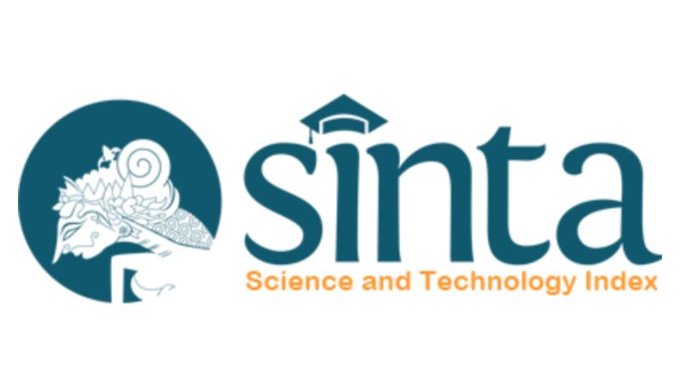Profil Flebitis pada Anak: Studi di Instalasi Rawat Inap RSUD Dr. Moewardi Surakarta
DOI:
https://doi.org/10.55175/cdk.v45i8.734Keywords:
Anak, antibiotik, flebitis, obatAbstract
Pendahuluan. Penggunaan kateter vena perifer bertujuan memasukkan cairan, obat, dan produk darah ke dalam tubuh. Komplikasi yang paling sering adalah tromboflebitis dan lebih sering terjadi pada anak. Beberapa faktor yang dapat mempengaruhi terjadinya flebitis pada anak perlu diketahui. Metode. Penelitian deskriptif menggunakan data rekam medis pasien anak di instalasi rawat inap RSUD dr. Moewardi Surakarta bulan Januari 2014-Desember 2016. Hasil. Dari 3037 pasien, 30 terdiagnosis flebitis (0,98%). Lama rawat inap terutama lebih dari 14 hari (10 pasien - 33,33%). Diagnosis terbanyak adalah keganasan hematologi (9 pasien - 30%). Terapi intravena terbanyak adalah antibiotik sejumlah 22 pasien (73,33%). Sebanyak 12 pasien (54,54%) mendapat 2 macam antibiotik intravena. Sebagian besar pasien mendapat 3-4 obat intravena pada saat bersamaan (56,67%). Diskusi. Beberapa faktor berkaitan dengan terjadinya flebitis. Penggunaan antibiotik multipel dan beberapa jenis obat pada saat bersamaan diperkirakan mempengaruhi risiko flebitis. Diduga sebagian kasus flebitis tidak dilaporkan ataupun tidak terdiagnosis. Diperlukan penelitian lebih lanjut kejadian flebitis anak agar dapat menjadi masukan untuk langkah pencegahan.
Introduction. Peripheral venous catheter is used to administer fluids, drugs and blood products into the body. The most common complication is thrombophlebitis, more common in children. Several factors can affect the occurrence of phlebitis in children. Methods. This study is descriptive study using pediatric medical records in Dr. Moewardi General Hospital Surakarta during January 2014-December 2016. Results. Among 3037 children inpatients, 30 diagnosed with phlebitis (0.98%). Most hospitalization period was more than 14 days (10 children - 33.33%). Most common diagnosis was haematological malignancy (9 children - 30%). The most common intravenous therapy is antibiotics (22 children - 73,33%). Twelve patients (54.54%) received 2 intravenous antibiotics. Most patients (56.67%) received 3-4 intravenous medications simultaneously. Discussion. Several factors related to the occurrence of phlebitis were length of hospitalization, patient’s hematological condition, type and amount of drugs, especially antibiotics. Multiple antibiotics, also multiple drugs, given simultaneously may have a role in phlebitis’ incidence. Many phlebitis cases may not be reported or properly diagnosed. Further researches are needed to obtain the incidence of phlebitis in children for appropriate measures to prevent phlebitis.
Downloads
References
Jacinto AKdL, Avelar AFM, Wilson AMMM, Pedreira MdLG. Phlebitis associated with peripheral intravenous catheters in children: Study of predisposing factors. Escola Anna Nery - Revista de Enfermagem. SciELO [Internet]. 2014. Available from: http://www.scielo.br/scielo.php?pid=S1414-81452014000200220&script=sci_arttext&tlng=en
Phillips LD, Gorski L. Manual of IV therapeutics: Evidence-based practice for infusion therapy: FA Davis; 2014.
Tagalakis V, Kahn SR, Libman M, Blostein M. The epidemiology of peripheral vein infusion thrombophlebitis: A critical review. Am J Med. 2002;113(2):146-51.
Uslusoy E, Mete S. Predisposing factors to phlebitis in patients with peripheral intravenous catheters: A descriptive study. J Am Assoc Nurse Pract. 2008;20(4):172-80.
Maki D, Mermer L. Infections due to infusion therapy. In: JV B, PS B, editors. Hospital Infections. 4th ed. Philadelphia, Pennsylvania: Lippincott-Raven; 1998. p. 689-724.
Abusafia BM, Boztepe H. Evaluation of peripheral intravenous catheter-induced local complications in pediatrics. J Clin Nurs. 2017 Jan 19. doi: 10.1111/jocn.13730.
Laudenbach N, Klaverkamp L, Hedman-Dennis S. Peripheral iv stabilization and the rate of complications in children: An exploratory study. J Pediatr Nurs. 2014;29(4):348-53.
Clark E, Giambra BK, Hingl J, Doellman D, Tofani B, Johnson N. Reducing risk of harm from extravasation: A 3-tiered evidence-based list of pediatric peripheral intravenous infusates. J Infus Nurs. 2013;36(1):37-45.
Webster J, McGrail M, Marsh N, Wallis MC, Ray-Barruel G, Rickard CM. Postinfusion phlebitis: Incidence and risk factors. Nurs Res Pract. 2015; ID 691934:1-3. http://dx.doi.org/10.1155/2015/691934
Machado AF, Pedreira MdLG, Chaud MN. Adverse events related to the use of peripheral intravenous catheters in children according to dressing regimens. Rev Lat Am Enfermagem. 2008;16(3):362-7.
Andriyani R, Satari HI, Amalia P. Duration of peripheral intravenous catheter use and development of phlebitis. Paediatr Indones. 2013;53(2):117-20.
Yoong W, Jo Y, Sulaiha S. Risk factors of peripheral venous catheterization thrombophlebitis. J Swedish Nurs. 2012;6(1):24-3.
Broughton G, Janis JE, Attinger CE. The basic science of wound healing. Plastic Reconstr Surg. 2006;117(7 Suppl):12-34.
Gorski LA. Standard 53: Phlebitis. J Infus Nurs. 2007;30(5):265-6.
Nagpal P, Khera GK, Kumar YA study to assess the clinical pattern of phlebitis among children admitted in selected hospital of Ambala, Haryana. Nurs Midwifery Res. 2015;11(2):68.
Gomes ACR, Silva CAGd, Gamarra CJ, Faria JCdO, Avelar AFM, Rodrigues EdC. Assessment of phlebitis, infiltration and extravasation events in neonates submitted to intravenous therapy. Esc Anna Nery Rev Enferm. 2011;15(3):472-9.
Society IN. Infusion nursing standards of practice (2011): Untreed Reads; 2011.
Tripathi S, Kaushik V, Singh V. Peripheral IVs: Factors affecting complications and patency—a randomized controlled trial. J Infus Nurs. 2008;31(3):182-8.
Park SM, Jeong IS, Jun SS. Identification of risk factors for intravenous infiltration among hospitalized children: A retrospective study. PloS one. 2016;11(6):e0158045.
O’grady NP, Alexander M, Burns LA, Dellinger EP, Garland J, Heard SO, et al. Guidelines for the prevention of intravascular catheter-related infections. Clin Infect Dis. 2011;52(9):162-93.
Cicolini G, Manzoli L, Simonetti V, Flacco ME, Comparcini D, Capasso L, et al. Phlebitis risk varies by peripheral venous catheter site and increases after 96 hours: A large multi-centre prospective study. J Adv Nurs. 2014;70(11):2539-49.
Doellman D, Hadaway L, Bowe-Geddes LA, Franklin M, LeDonne J, Papke-O’Donnell L, et al. Infiltration and extravasation: Update on prevention and management. J Infus Nurs. 2009;32(4):203-11.
Earhart A, McMahon P. Vascular access and contrast media. J Infus Nurs. 2011;34(2):97-105.
Bolta M, Urreya AM. Phlebitis in children. Rev Enferm. 2004;27(9):48-9, 51, 3-4
Downloads
Published
How to Cite
Issue
Section
License
Copyright (c) 2018 https://creativecommons.org/licenses/by-nc/4.0/

This work is licensed under a Creative Commons Attribution-NonCommercial 4.0 International License.





















